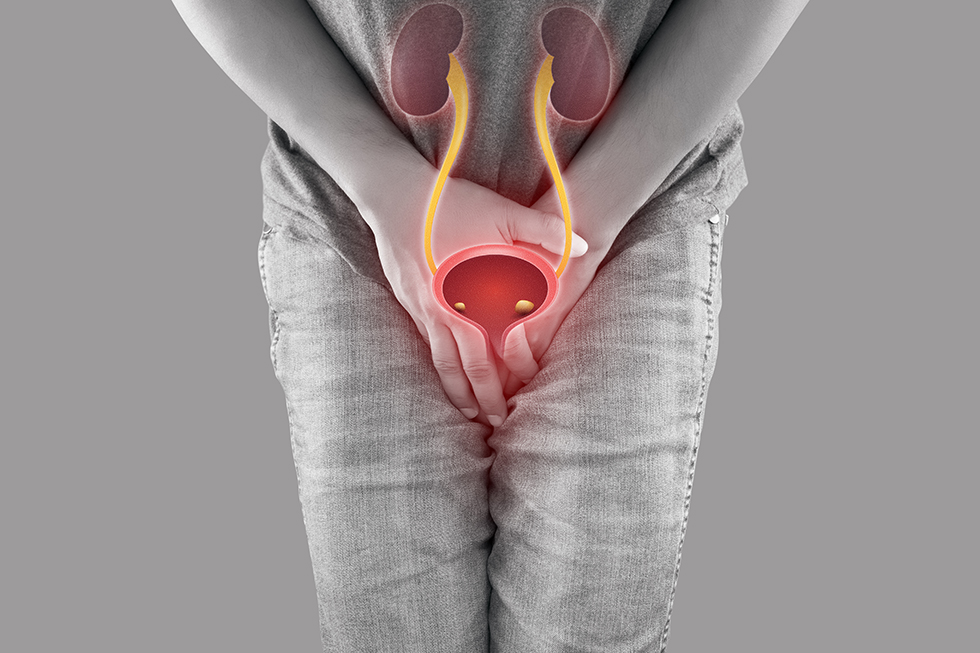
Urinary incontinence refers to the unintentional loss of urine. It can range from occasional leakage to complete loss of bladder control. This condition can be caused by various factors, including weak pelvic floor muscles, nerve damage, or hormonal imbalances.
There are several types of urinary incontinence, each with its unique characteristics and underlying causes.
Stress Incontinence
Stress incontinence occurs when physical activities such as coughing, sneezing, laughing, or exercising put pressure on the bladder, leading to urine leakage. It is commonly caused by weakened pelvic floor muscles.
Urge Incontinence
Urge incontinence, also known as overactive bladder, involves a sudden and intense urge to urinate, followed by involuntary urine leakage. It is often caused by an overactive detrusor muscle in the bladder.
Overflow Incontinence
Overflow incontinence occurs when the bladder doesn't empty completely, resulting in frequent or constant dribbling of urine. This can be caused by an obstruction in the urinary tract or weak bladder muscles.
Functional Incontinence
Functional incontinence is not directly related to bladder or urinary tract problems but is caused by external factors such as physical or cognitive impairments that make it difficult for individuals to reach the toilet in time.
Urinary incontinence can be caused by various factors, including:
- Muscle Weakness and Dysfunction: Weak or damaged pelvic floor muscles can contribute to urinary incontinence. Pregnancy, childbirth, and aging can weaken these muscles, leading to bladder control problems..
- Nerve Damage: Nerve damage resulting from medical conditions such as diabetes, multiple sclerosis, or stroke can disrupt the communication between the bladder and the brain, causing urinary incontinence.
- Hormonal Changes: Hormonal changes that occur during menopause can affect the bladder and urethra, increasing the risk of urinary incontinence in women.
- Medical Conditions: Certain medical conditions like urinary tract infections, prostate issues, and bladder stones can contribute to urinary incontinence.
- Lifestyle Factors: Factors such as excessive caffeine or alcohol consumption, smoking, obesity, and chronic constipation can increase the risk of developing urinary incontinence..
To diagnose urinary incontinence, healthcare professionals may perform several assessments and tests, including:
- Medical History and Physical Examination Your doctor will discuss your symptoms, and medical history, and perform a physical examination to identify any underlying causes or contributing factors.
- Urine Tests Urine tests help rule out any infections or abnormalities in the urinary tract that may be causing or contributing to urinary incontinence.
- Bladder Diary Keeping a bladder diary can provide valuable information about your urination patterns, fluid intake, and episodes of incontinence.
- Specialized Tests In some cases, specialized tests such as urodynamic testing, cystoscopy, or ultrasound may be conducted to evaluate the bladder's function and identify specific causes of urinary incontinence.
FAQ's
Services
- Kidney Stone
- Kidney Transplant Evalution & Surgery
- BHP
- Uro-Oncology
- Kidney Cancer
- Penis Cancer
- Bladder Cancer
- Prostate Cancer
- Testicular Cancer
- Urethral cancer
- Sexual dysfunction & Male infertility
- Erectile dysfunction and Impotence
- Andrology
- Robotic Surgery
- RIRS
- Blood in Urine
- Urinary Tract Infection
- Urinary Incontinence
- Prostate Gland
- Pediatric Urology & Laparoscopy
- Aging Male
- Female Urology
- Penis Enlargement
- Varicocele
- A-V Fistula & Ralated Vascular Access Surgery
